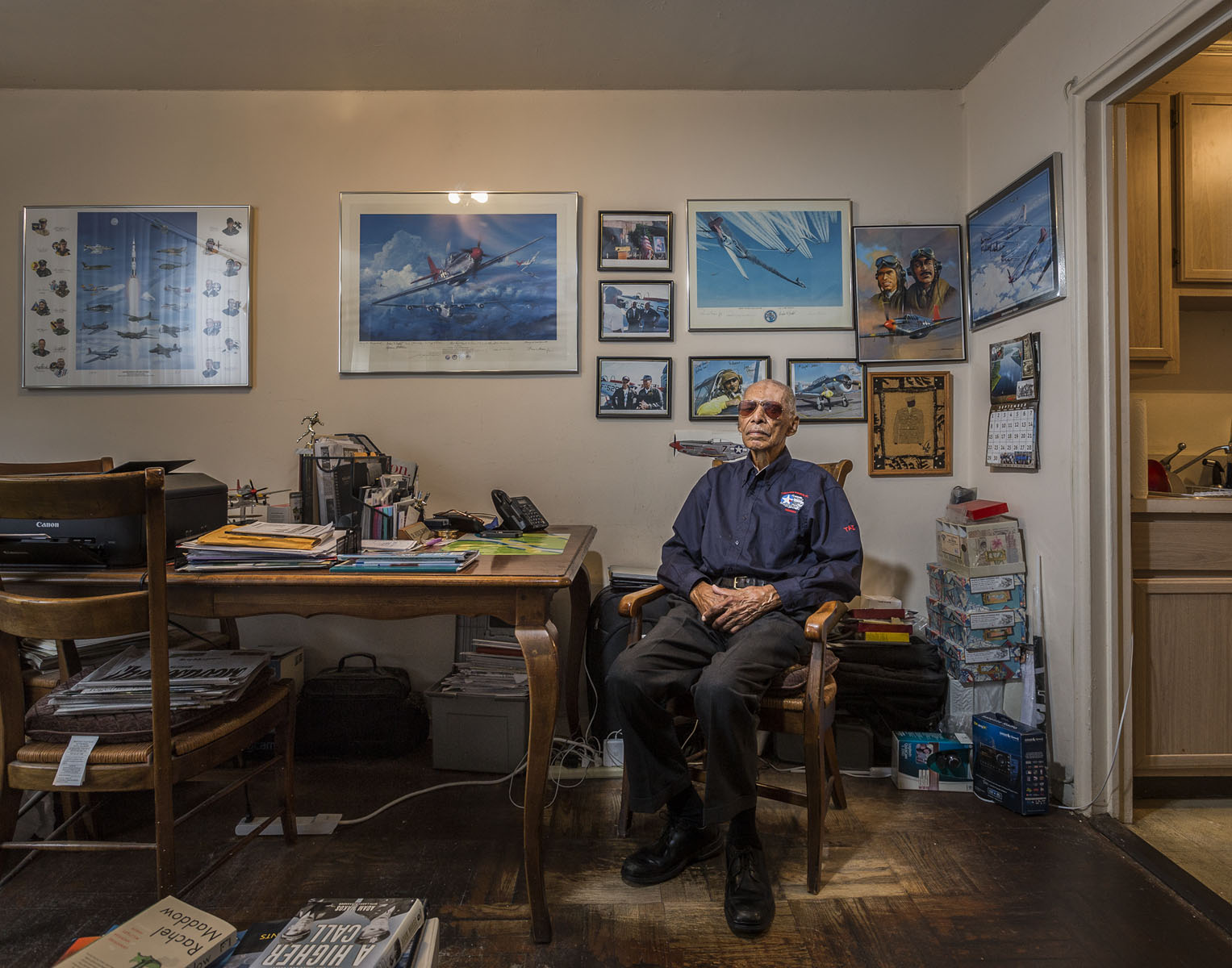I'm Dr. Roscoe C. Brown Jr. I'm from Washington, D.C. and I was born on March 9, 1922. I graduated from Springfield College in Massachusetts in 1943.
Many people are not aware today that the military in this country was racially segregated. Most black troops in the past had been laborers and quartermasters. But because of the desire of many African-American youths like myself to fly airplanes, we were able to enter the Tuskegee Airman, after the NAACP and the black press pressured the president to establish a flying unit for African-Americans.
My training occurred in Alabama, where there was a famous black university, the Tuskegee Institute. I graduated as a fighter pilot in March, 1944. I left to go overseas and join the 332 Fighter Group at Ramitelli Airfield. I flew my first mission on August 21, 1944. Because we flew B-51s with shiny red tails, we were known as the Red Tail Angels.
We lived in tents all through the airfield, which was about 5,000 feet long, going right down to the Adriatic Sea. Many of the Italian civilians worked with us and brought us eggs and chickens and so on. And we would give them a little money to help clean up our tents.
When missions were scheduled, you would have to get up at 05:00, go to the briefing where they told us the target and you'd take off around 08:00. Then you'd fly the mission and come back around 12:30 and go to a debriefing. Then you would rest, play a little poker. Have dinner. Go to bed. The next day you were flying again. I was there almost a year. Every day you knew you were going to have to fly. After you flew four or five missions you'd have a day off, and after you flew about ten or twelve missions you'd go to a rest camp in another part of Italy. I flew sixty-eight combat missions until the end of the war.
Our missions were memorable, because you were sitting in a single-engine plane for five hours, flying over enemy territory, escorting the bombers. But the most dangerous missions were strafing missions, where you'd come close to the ground to shoot up airplanes or tanks on the ground. That's where we lost most of our pilots. Once, I got too low shooting at a train and hit it, and bent up half my wing. But I was able to control it and flew the 500 miles back to our base and was able to land it.
On March 24, 1945, I was one of the first American pilots to shoot down a jet plane. I shot down an Me-262 over the heart of Berlin. Near the end of the war, we went there to bomb a tank factory on the edge of the city. We didn't know we were going to meet any enemy fighters. Then we heard them. They had jets coming out to attack the bombers. I flew down beneath the bombers, turned away from a jet so he didn't see me, then turned back and blew him up.
We flew our last mission in April, 1945 and stayed another few months before getting transferred back to the United States.
I resumed my academic career and earned a PhD in 1951, and became a professor at New York University. Later, I became the head of the Institute of African-American Affairs, which was one of the first black studies programs in the country. In 1977, I became the President of Bronx Community College, where I served for sixteen years. Presently, I'm Director for the Center for Urban Education Policy at the CUNY Graduate Center. I think it's important for people to realize that World War 2 was a watershed. Not only fighting fascism, but racism. We became aware of the fact that an African-American can do anything anyone else can do. And all of us knew we'd made a sacrifice. We had the G.I. Bill, we went to college, we got degrees, we started businesses. That began, in a sense, the Civil Rights Movement.
